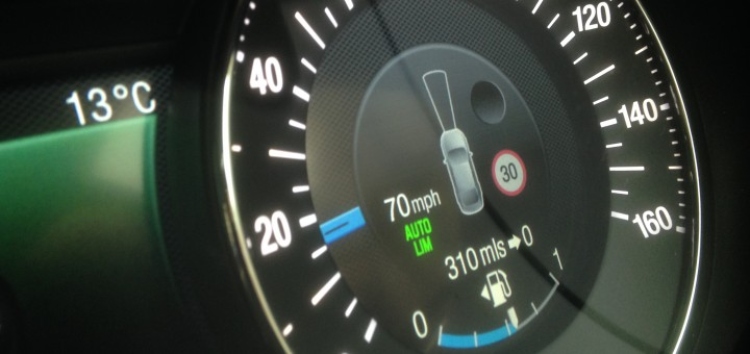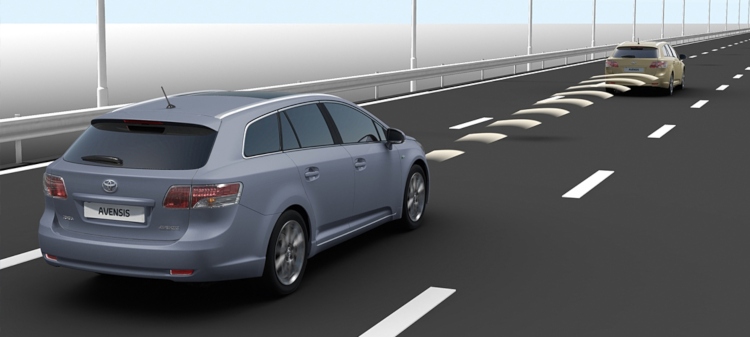The Technology behind the EU’s New Car Safety Proposals
Last week the European Commission proposed new safety measures to be introduced on all new models of cars sold in the European Union from 2022. So, what is the technology behind the EU’s new car safety proposals?
Intelligent Speed Assistance (ISA) Technology
According to the European Transport Safety Council (ETSC), Intelligent Speed Assistance technology is the technology that could have the biggest impact on saving lives in Europe.
ISA technology advises the driver of the current speed limit on the dashboard and will issue an audible alert if the driver exceeds the speed limit by a pre-determined amount, usually 2 km/hr.
The system works by determining the location of the car using global positioning (GPS) navigation. This is cross-referenced with speed information provided by a digital map of the road the car is currently driving on. Some systems also use speed sign recognition cameras to identify the speed limit.

Some manufacturers, particularly Ford, Honda, Jaguar and Volvo, have started to include a speed limiter facility as part of the ISA system. When activated, these systems will prevent the driver from exceeding the speed limit. This is achieved by limiting the engine power once the driver has reached the current speed limit. This is similar to existing technology used in cruise control functions.
When a driver enters a lower speed zone, the car doesn’t automatically brake. Instead, a visual warning is displayed, and it is the driver’s responsibility to reduce their speed. If the driver doesn’t brake, the engine power delimiter will activate and gradually slow the car to the new speed limit.
The ISA system can be turned on or off, usually with a button on the steering wheel. This is to allow the ISA to be temporarily overridden for occasions where a burst of speed may be required on safety grounds, for example, to pass a truck or caravan on a country road.
Advanced Emergency Braking System (AEBS)
The Advanced Emergency Braking System is a semi-automated braking system designed to help prevent collisions or to limit their consequences. The AEBS technology works in conjunction with the Forward Collision Warning (FCW) system. The FCW system uses cameras and/or sensors fitted to the front of a car. The cameras/sensors monitor how close a vehicle, pedestrian or other obstacle is, and detect whether a crash is imminent based on the speed of the car and the distance to the obstacle.

If the FCW system determines that a crash is imminent, a visual and audible warning is issued to the driver. If the driver fails to respond to the warning by increasing the distance between the car and the obstacle, the AEBS system is activated. This reduces the speed of the vehicle as much as possible to prevent a collision, or to minimise the impact of the collision if one should occur.
Lane Keeping Assistance Technology
Lane Keeping Assistance Systems are intended to provide visual or audible alerts to notify a driver that they are crossing over into another lane without signalling. Initial systems were intended to be used as a simple way of detecting that a driver had fallen asleep at the wheel.
The first systems used infrared sensors, but most new car models now use a video camera mounted on top of the rear-view mirror. The technology tracks the road markings, and if the car moves towards the white lines and passes over them, the driver is alerted.
Some systems are now clever enough to gently move the steering wheel to guide the car back into the centre of the lane without the driver making any corrections.
The system works well on motorways or two-lane highways but could be troublesome when travelling along country roads where often the driver is on or over the centre line because of the width of the road. The system can be de-activated, which might be a necessity on certain roads.
Alcohol Interlock Installation Facilitation System
An Alcohol Interlock Installation Facilitation System is designed to prevent a person from being able to drive a car with excess alcohol in their system.
These control systems require the driver to blow into an in-car breathalyser before starting the ignition. If the driver’s alcohol limit is above the specified legal limit, the car will be prevented from starting.
This system is widely used in North America and Sweden in rehabilitation schemes for repeat offenders who have driven with alcohol levels above the legal limit. Also, in Sweden, the interlocks are widely used in company cars and goods transport companies.
[perfectpullquote align=”full” bordertop=”false” cite=”” link=”” color=”#1AC4A8″ class=”” size=””]Suggested Reading: Can Technology Help Those with Poor Vision Drive Safely?[/perfectpullquote]
Drowsiness and Attention Detection System
These systems use various technologies to determine if a driver is feeling the effects of drowsiness. Most of the systems use algorithms to analyse a series of signals that are fed back to the control system from the moment that a journey begins.

In order to assess whether the driver is feeling drowsy, the system will check information such as road positioning, steering movements and how long the driver has been driving. If the algorithms indicate drowsiness, an audible beep is issued, and a message is displayed on the dashboard, usually in the form of a coffee cup to indicate that the driver should take a break.
Volvo was the first manufacturer to introduce a Driver Drowsiness Detection system, but other manufacturers such as Mercedes, BMW, Ford, Hyundai and Mazda have since introduced this technology.
Distraction Recognition/Prevention System
These systems are currently in the development phase. They generally involve a small in-car camera being placed in the front of the car to observe the driver. The camera will capture images of the driver over fixed intervals, normally around every 15 seconds.
These images are then passed back to the cloud servers along with the GPS co-ordinates of the car. They are analysed by algorithms and Artificial Intelligence to assess whether the driver is distracted, maybe by using a mobile phone, eating food or getting an item from the passenger seat. If the system detects a driver is distracted, an audible alert will be issued.
Event Data Recorder (EDR)
An Event Data Recorder is an electronic device, probably the size of a smartphone, that is installed in vehicles to record data related to vehicle accidents. It is often referred to as a car’s black box.
Most EDRs continually overwrite data, therefore only recording the last few minutes before a crash. However, some systems continuously record data from the time the car is switched on.
EDRs record a wide range of information that would be useful to crash investigators, such as whether the brakes had been applied, the speed at the time of impact, the angle of the steering and whether the seat belts were buckled or not. The type and amount of information recorded will largely depend on the age of the car. New models tend to have more information available to the system.
EDRs are normally linked to the airbag control system and will stop recording once the airbag has been deployed.
